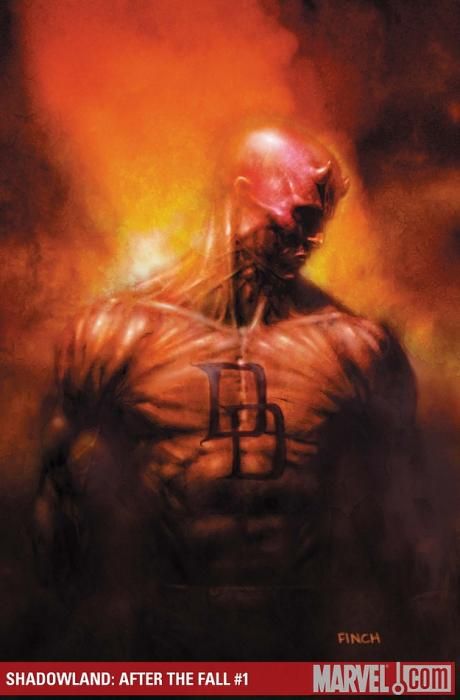Ah yes, Nothing makes you remember you've just sat through a big event comic than wading through the multiple epilogues that result. This week, "Shadowland: After the Fall" arrives, performing a functionally identical task to "Daredevil# #512. It checks in with Daredevil's supporting cast, explains where Murdock has gone, and introduces the Black Panther as the new protector of Hell's Kitchen. Just as "Daredevil" #512 did. The main difference? Well... there's the title, for one.
In fairness, although this issue covers the same ground as the recent "Daredevil" issue, the fact that it's the same writer means that it at least does so without contradiction, which has been a problem for event codas in the past. This issue follows two characters specifically: Ben Urich, newspaper reporter, and Detective Kurtz, a cop in Hell's Kitchen. Both are attempting to get to the bottom of what happened to Daredevil. The former does so out of concern for Matt, and the latter to bring him to justice. Through their eyes, we get to see exactly what has happened to Hell's Kitchen in the wake of Daredevil's demonic episode, and how the public feels as a result.
To Marvel's credit, things are far from back to normal. The Hand is still entrenched, hiding inside Shadowland, and Murdock is gone (though one imagines he won't be gone for too long). It would have been all too easy to leave Hell's Kitchen as a blank slate for incoming writer David Liss, but if nothing else, he has some issues left to deal with - not least the explanation of what the Panther is doing in Hell's Kitchen at all, since his two appearances so far have given little indication of why he suddenly arrived here.
One unique approach the comic takes is to examine the area of Hell's Kitchen through the lens of the Marvel Universe, and in particular the rising fortunes of the area. Even as a Brit, I'm aware that Hell's Kitchen has improved substantially since the 60s, and although Daredevil will always exist in a sort of "idealized" Irish-American gangland, it makes perfect sense to address its current fortunes within the scope of this storyline, and make a point about Daredevil in doing so. It's a nice scene.
Overall, it's hard to shake the feeling that the contents of this comic are largely redundant, but between the atypical interpolating structure, excellent artwork from both Roberto De La Torre and Marco Checchetto, and inventive, character-specific palettes from Morry Hollowell, it's ultimately a better read than "Daredevil" #512, the comic with which it shares so much, and a more reflective coda to "Shadowland" as a whole.

